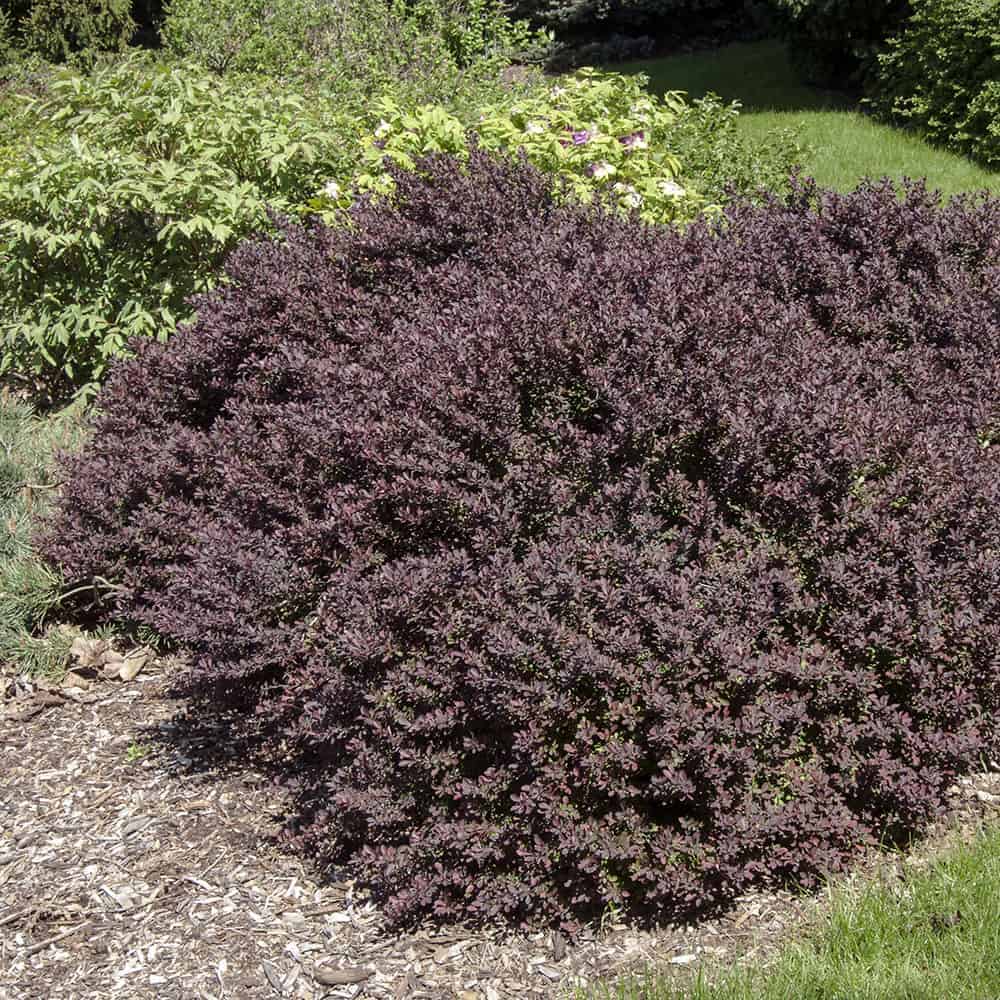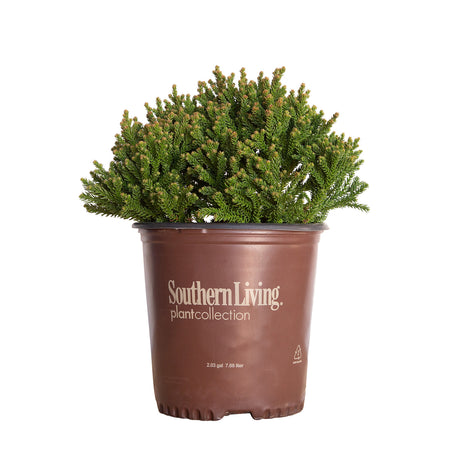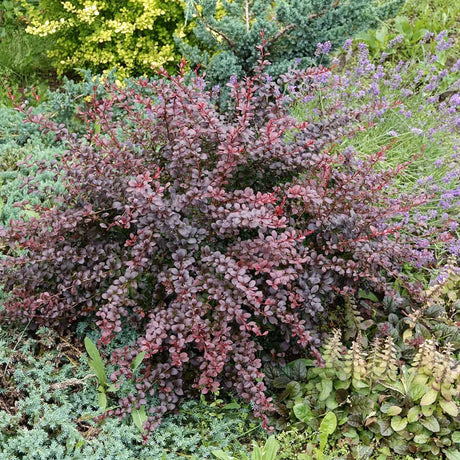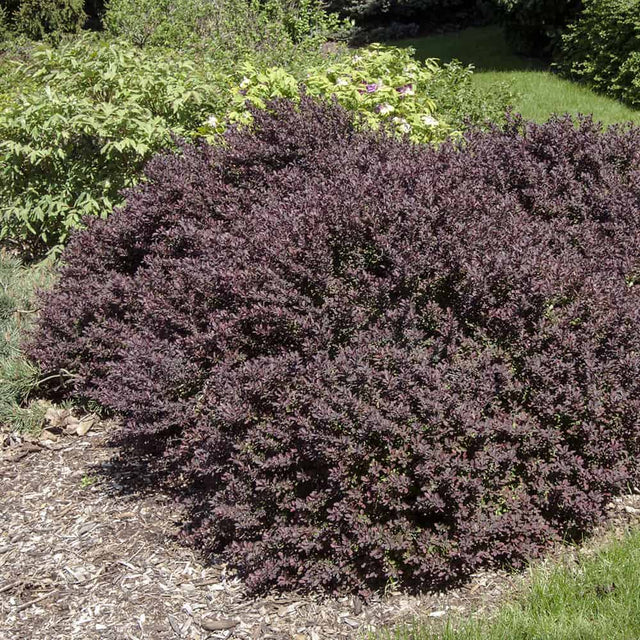Royal Burgundy Barberry
Royal Burgundy Barberry - 2.5 Quart is backordered and will ship as soon as it is back in stock.
Couldn't load pickup availability
Description
Description
The Royal Burgundy® Barberry is a great selection to bring bold color and texture to your garden. The deep purple-red foliage makes for a really unusual and eye-catching element in your landscape.
This is a deciduous plant, which means that it will lose its leaves in winter and return with new growth in spring. Normally, this would mean that it would offer very little interest in the winter landscape besides its bare branches. However, this Barberry's foliage will darken to a hue of almost black-red in late fall and into winter.
Thanks to its slow-growing nature, pruning is essentially completely unnecessary. So it's a very low-maintenance selection. It reaches 1-2' H x 1-4' W at maturity.
Use this variety as a low hedge, an accent in a mixed garden bed, in a foundation planting, or as a mass planting.
Royal Burgundy Barberry Care
This variety is hardy from USDA Zones 4-8. Once established in the landscape, it's quite cold-hardy and can handle temperatures between -30° and -20° F.
They grow best with Full Sun exposure. Too little sun will affect their ability to produce dense foliage.
Water your new plantings 2-3 times per week for the first growing season. This helps them grow deep root systems that will help them succeed over time.
Grows well in most average quality soils with good drainage. Avoid planting in consistently wet sites.
Fertilize in early spring with a slow-release fertilizer to promote new growth and the overall health of your plant.
Popular Companion Plants
The Royal Burgundy easily provides dynamic texture and color contrast with many different plants. The Dwarf Alberta Spruce Tree looks fantastic planted with it because of its naturally pyramidal growth, upright nature, and needled foliage. It also looks great with bright yellow plants, such as the Sunshine Ligustrum or Gold Mop False Cypress. Their brilliant foliage really pops in the landscape with the dark wine-colored barberry foliage. Otherwise, try it with low-growing cool-colored plants such as Groundcover Junipers or the Pancake Arborvitae. Their blue-needled foliage makes for a really unusual and beautiful complement.
Care & Use
Care & Use
Spacing Recommendations
Spacing Recommendations
-
Scientific Name
-
Hardiness Zone4, 5, 6, 7, 8
-
Sun ExposureFull Sun
-
Evergreen or DeciduousDeciduous
-
FeaturesAttracts Birds / Butterflies, Sun Loving, Variegated
-
Feature ColorGreen, Red
-
UsesAccent, Border, Foundation Planting, Hedge, Mass Planting, Mixed Garden Bed, Woodland Garden
-
Water NeedsWater-Wise
-
Bloom SeasonNone
Growing Zones : 4, 5, 6, 7, and 8







